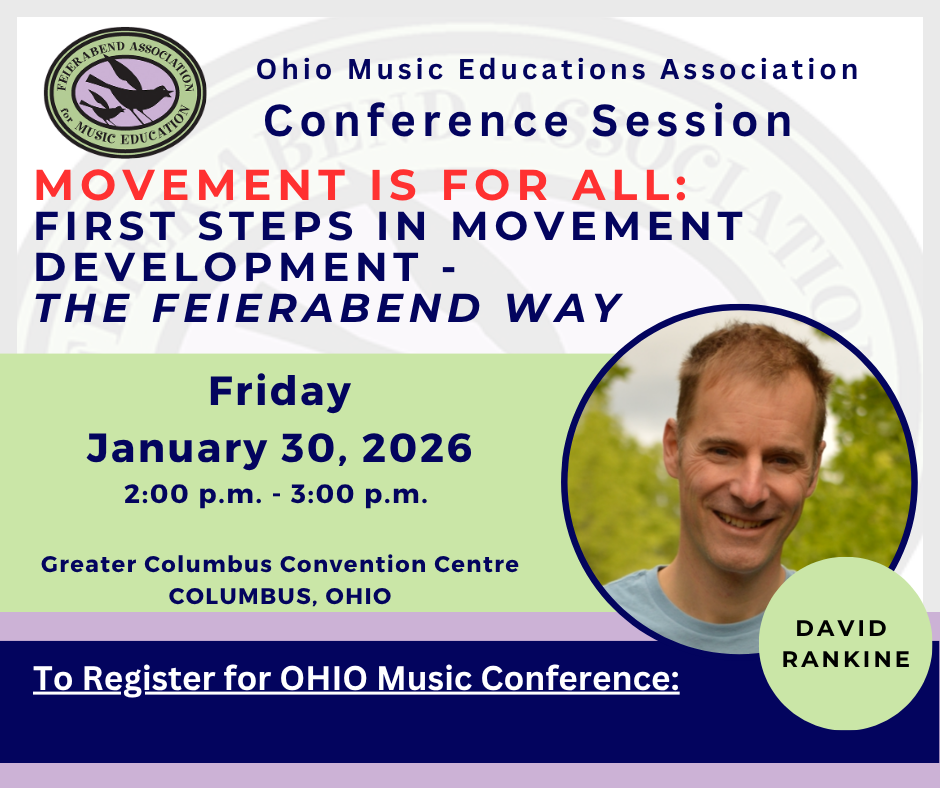
Movement is for All: First Steps in Movement Development – the Feierabend Way
CONFERENCE: Ohio Music Educators Association - Columbus, OH

CONFERENCE: Ohio Music Educators Association - Columbus, OH
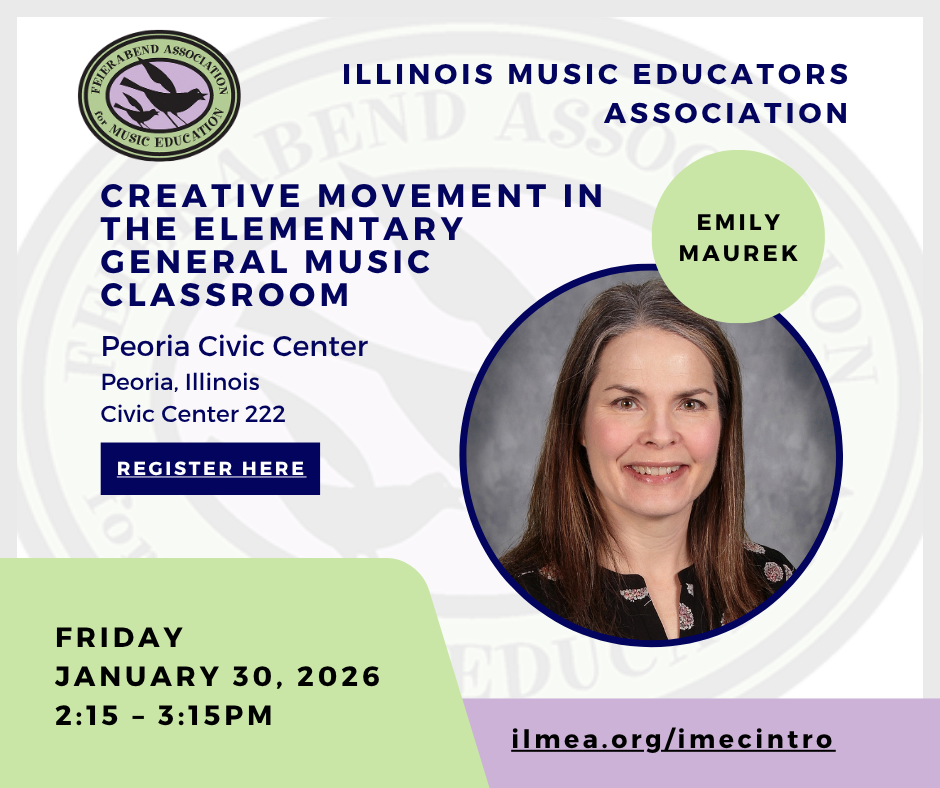
CONFERENCE: Illinois Music Education Association - Peoria, Illinois
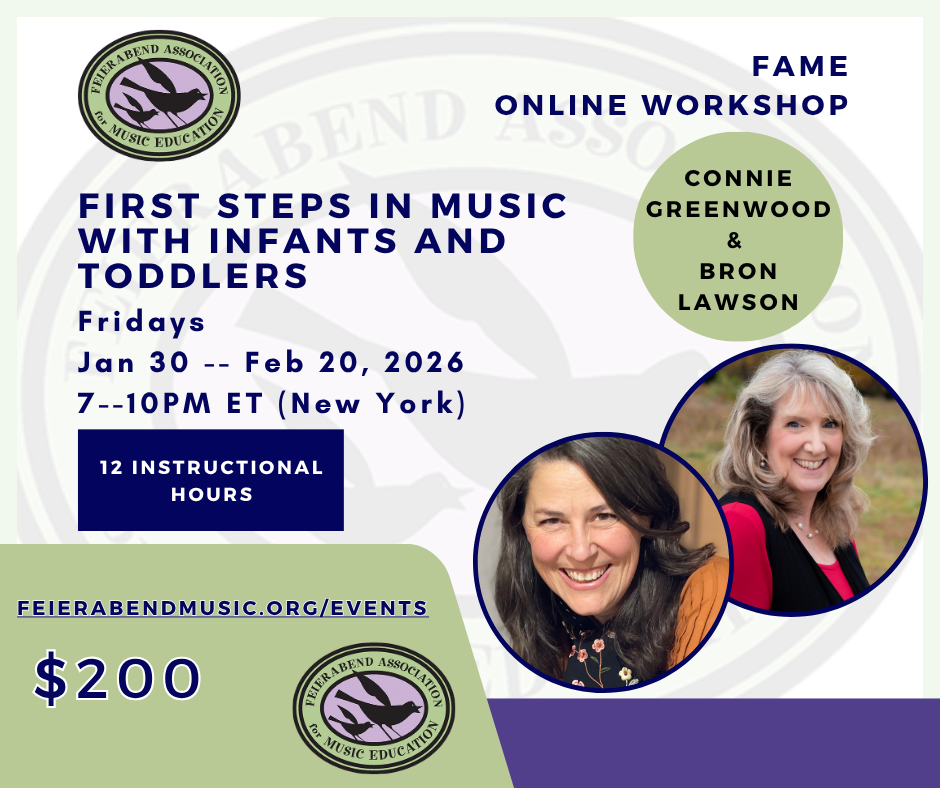
FRIDAYS: Jan. 30, Feb. 6, Feb. 13. Feb. 20
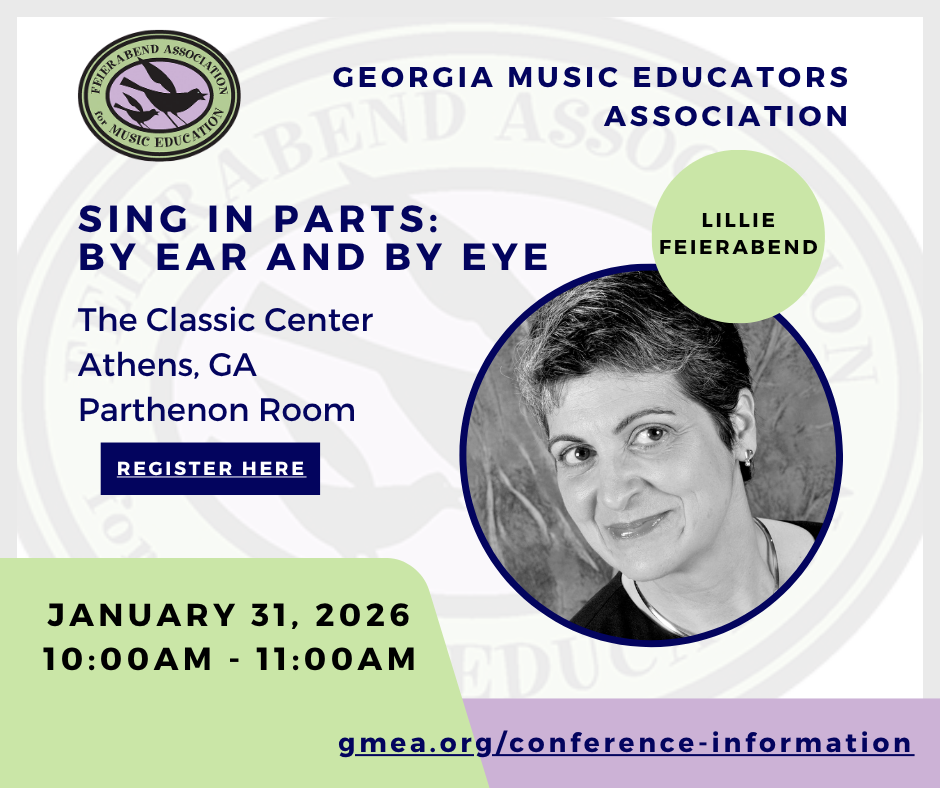
CONFERENCE: Georgia Music Educators Association - Athens, GA
Transitioning from unison to part singing is challenging for upper elementary/middle school students. Proven strategies first by ear, then by eye are critical for the preparation of choral singing in the later grades. This lively session will guide participants through the sequential steps necessary to guarantee success in part-singing competency.
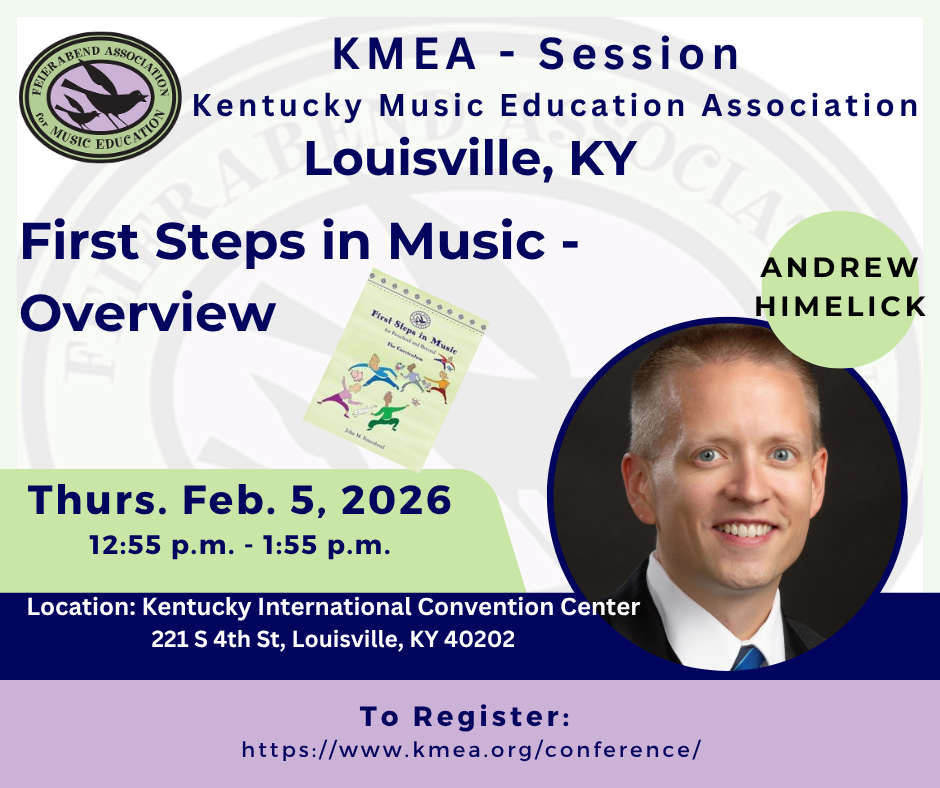
CONFERENCE: Kentucky Music Educators Association - Louisville, KY
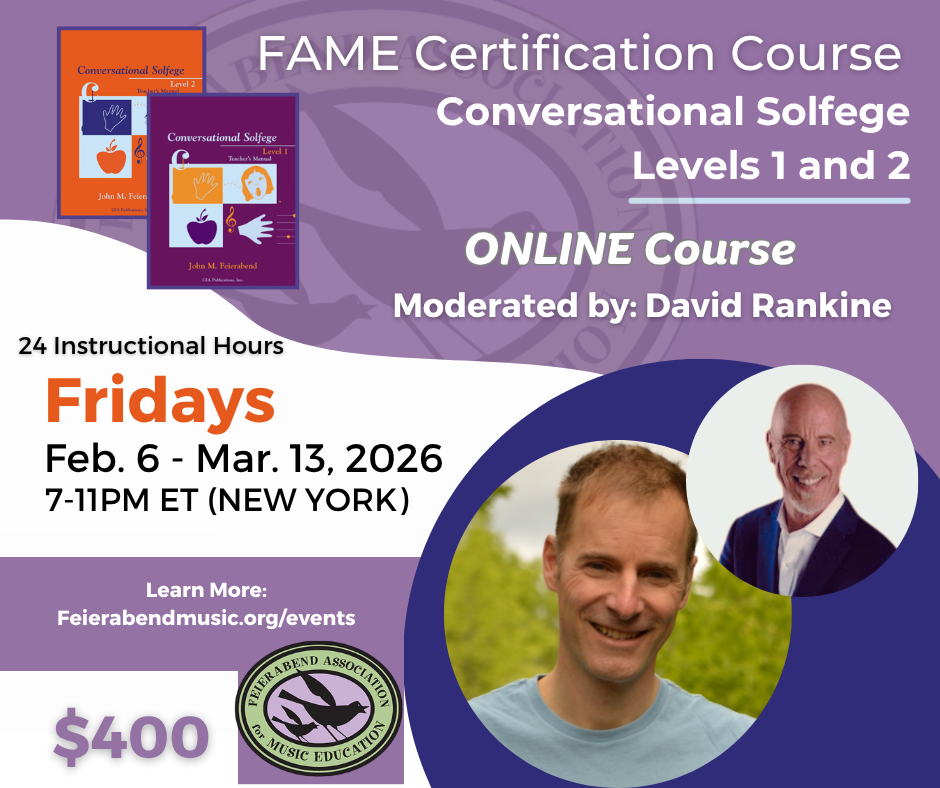
Earn your official Conversational Solfege Levels 1 & 2 Certification from the Feierabend Association for Music Education (FAME) in this engaging, fully online course!
Hosted live on Zoom by a FAME-certified moderator, each session features recorded lectures by Dr. John Feierabend, interactive discussion, and guided reflection. You’ll explore the complete Conversational Solfege approach—a joyful, literature-based method that builds musical independence through rhythm and tonal syllables, leading students from “sound before symbol” to reading, writing, improvising, and composing music.
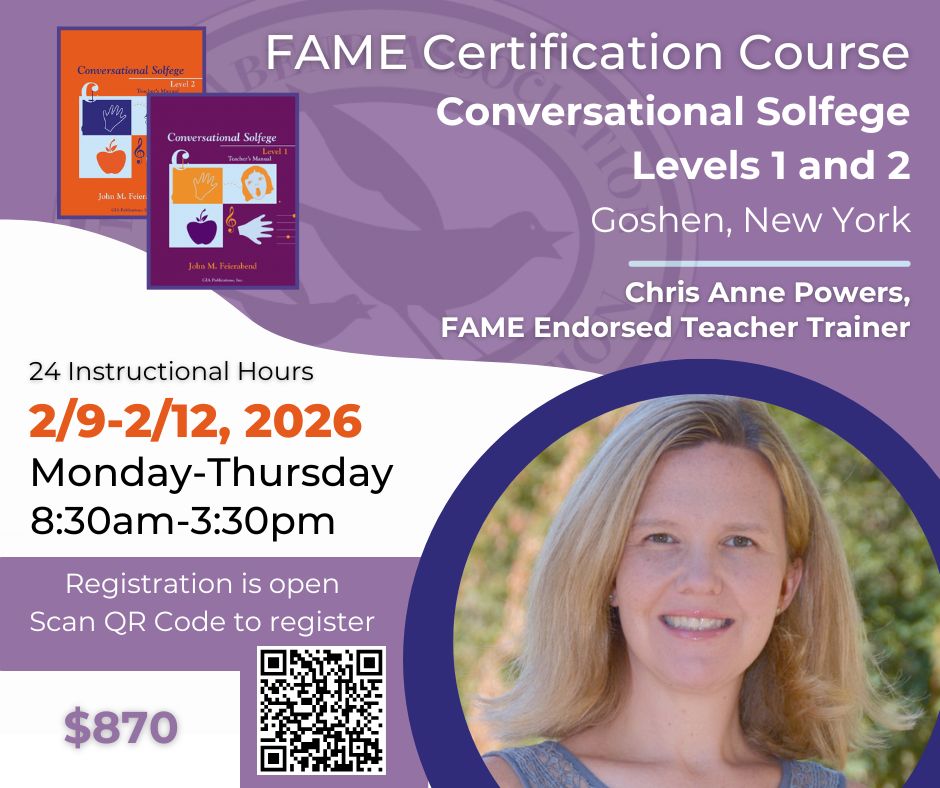
With the Conversational Solfege approach, music literacy starts with an “ear-before-eye” philosophy. Songs are broken down into their component parts and then reassembled so students grow in musical understanding. This session is a basic overview of the 12-step teaching method created by Dr. John M. Feierabend.
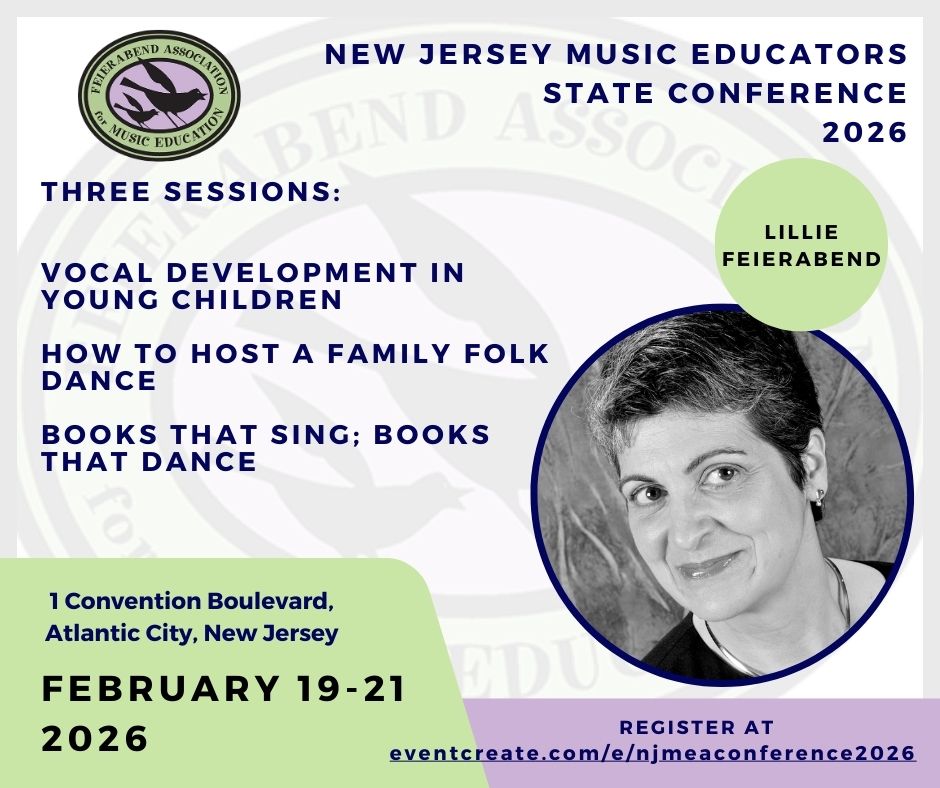
CONFERENCE: New Jersey Education Association - Atlantic, NJ

CONFERENCE: New Jersey Education Association - Atlantic, NJ

CONFERENCE: New Jersey Education Association - Atlantic, NJ